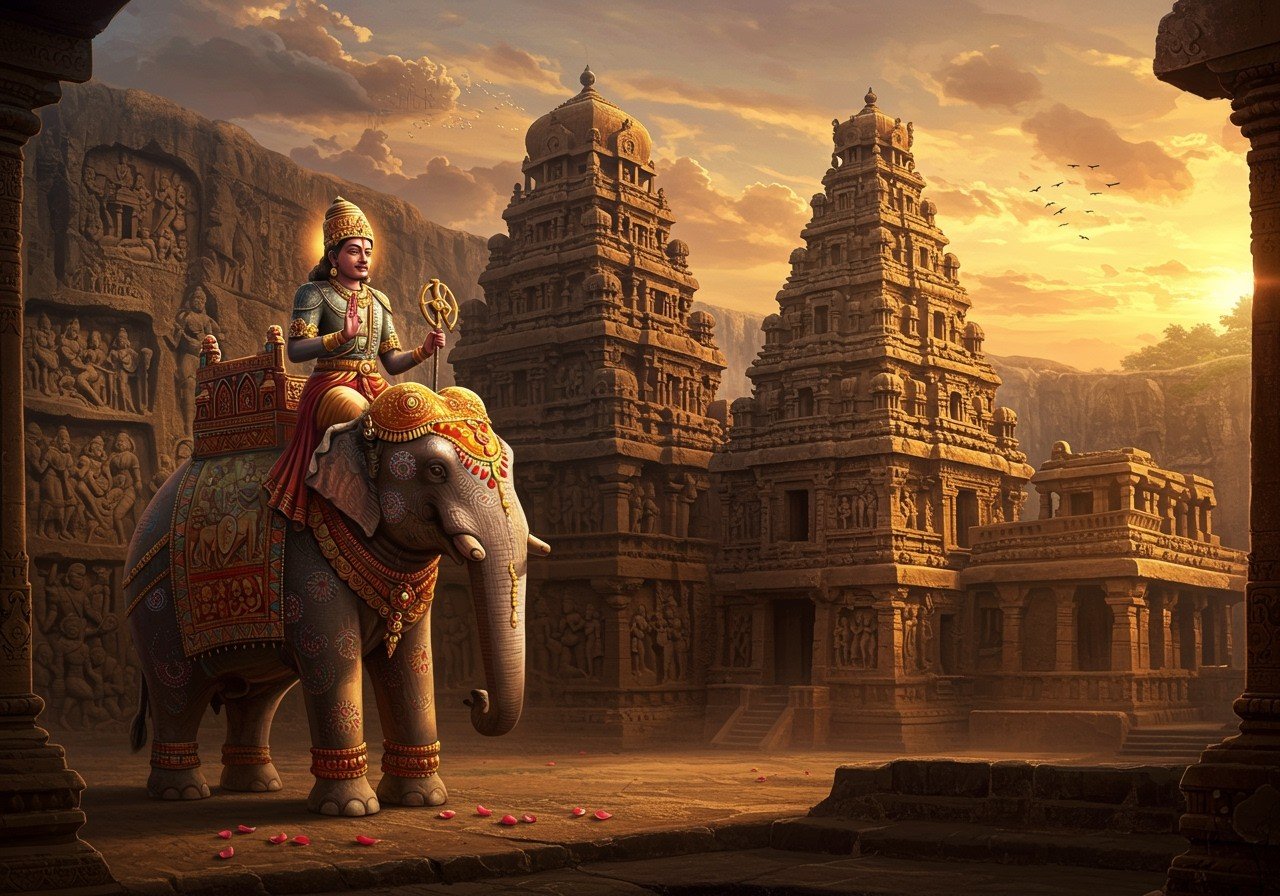
The Rashtrakuta Dynasty, a prominent force in ancient India, significantly shaped the Deccan region and beyond from approximately 755 to 975 CE. Known for their military prowess, architectural marvels, and patronage of the arts, the Rashtrakutas left an indelible mark on India’s cultural and political landscape. This article delves into their captivating history, exploring their rise to power, remarkable achievements, and eventual decline.
Origins and Ascent (755-800 CE)
Emerging from relatively humble beginnings as Dravidian farmers and the royal family of Lattalur, the Rashtrakutas quickly rose to prominence. Their origin story is shrouded in some mystery, with links to earlier dynasties and various regions. Dantidurga, the founder, orchestrated a successful campaign against the Chalukyas of Badami around 753 CE, solidifying Rashtrakuta dominance in the Deccan and laying the foundation for their future empire. Early rulers like Krishna I further consolidated their power, showcasing their military acumen and forging strategic alliances.
Explore the global reach of Hinduism and its diverse traditions.
The Golden Age (800-900 CE)
The reign of Krishna I marked a period of significant cultural and architectural flourishing. His commissioning of the awe-inspiring Kailasa Temple at Ellora stands as a testament to Rashtrakuta artistic and engineering brilliance. This rock-cut marvel, a UNESCO World Heritage site, exemplifies their sophisticated craftsmanship and devotion to religious expression. Under rulers like Dhruva Dharavarsha and Govinda III, the empire expanded dramatically, reaching its zenith with territories stretching from the Narmada River in the north to Kanyakumari in the south. This era witnessed not only military triumphs but also a flourishing of art, literature, and religious tolerance, with the Rashtrakutas supporting Hinduism, Jainism, and Buddhism.
Delve deeper into the complete history and origin of Hinduism.
Decline and Dissolution (900-975 CE)
Despite their golden age, the seeds of decline were sown in the late 10th century. Internal strife and external pressures gradually chipped away at Rashtrakuta power. The Paramara King Siyaka Harsha’s attack in 972 CE significantly weakened their capital, Manyakheta (present-day Malkhed in Karnataka), and dealt a blow to their reputation. The Cholas in the south and other regional powers also exerted pressure, further fragmenting the empire. The final blow came from the Chalukyas of Kalyani, under Tailapa II, leading to the ultimate demise of the Rashtrakuta Dynasty around 975 CE.
Discover the religious importance and history of the Kandariya Mahadeva Temple
A Lasting Legacy
Though their reign ended, the Rashtrakuta legacy continues to resonate. Their architectural wonders, particularly the Kailasa Temple, inspire awe and admiration to this day. Their patronage of art and literature enriched India’s cultural heritage, and their promotion of religious harmony set a positive example for future dynasties. The Rashtrakutas serve as a reminder of the cyclical nature of power and the enduring impact of cultural contributions.
Explore authentic Tulsi malas and other spiritual items at Poojn.in
Exploring the Rashtrakuta Dynasty: Frequently Asked Questions
Who established the Rashtrakuta Dynasty, and when? Dantidurga founded the dynasty around 753 CE.
What led to the downfall of the Rashtrakuta Empire? A combination of internal conflicts, the rise of rival powers (including the Chalukyas and Paramaras), and weakening leadership contributed to their decline.
What are the most notable achievements of the Rashtrakutas? Their architectural marvels, such as the Kailasa Temple at Ellora, their patronage of art and literature, and their promotion of religious tolerance stand out as significant achievements.
Where was the capital of the Rashtrakuta Dynasty located? Manyakheta, present-day Malkhed in Karnataka, served as their capital.
Discover a wide range of cultural and religious products at Poojn.in


